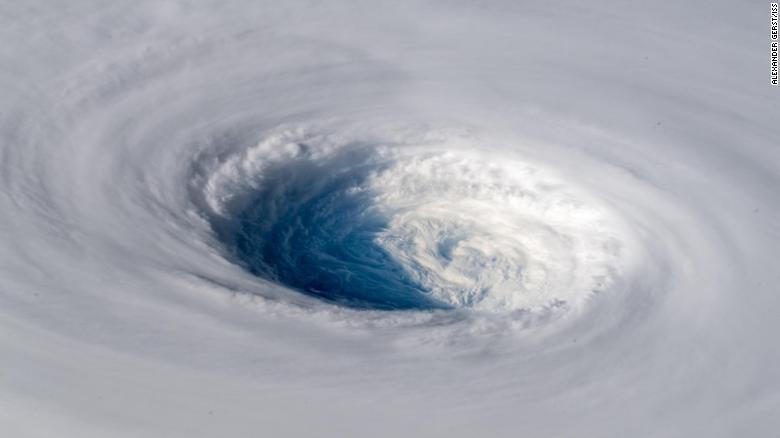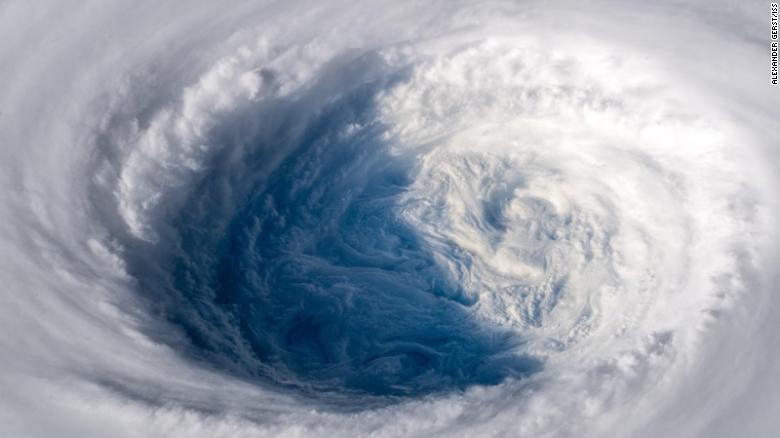Tên đẹp mà ác - Trà Mi
Page 1 of 1 • Share
 Tên đẹp mà ác - Trà Mi
Tên đẹp mà ác - Trà Mi
Stunning images of Typhoon Trami, currently projected to make landfall in mainland Japan on Sunday, have been captured by an astronaut on the International Space Station (ISS).
European astronaut Alexander Gerst posted the photos on Twitter Tuesday, noting that it looked "as if somebody pulled the planet's gigantic plug."
"Staring down the eye of yet another fierce storm. Category 5 Super Typhoon Trami is unstoppable and heading for Japan and Taiwan. Be safe down there!" he wrote.

Gerst wrote that, from space, the storm looks "as if somebody pulled the planet's gigantic plug."
By Wednesday, the storm had weakened and it is no longer considered a "super typhoon." But with sustained wind speeds of around 195 kilometers per hour (121 mph), its strength remains that of a category 3 hurricane, and the islands in the storm's projected path are bracing for its arrival.
If the current forecast holds, Trami will hit the Ryukyu islands south of Japan, including Okinawa, with winds between 185 and 200 kph (115 and 125 mph) beginning Friday night into Saturday morning.
From there the storm is expected to take a turn toward the northeast and will likely make landfall over Kagoshima prefecture as a strong typhoon with sustained winds equivalent to a category 3 hurricane Sunday afternoon. The storm will progress across the mainland dumping rain through the remainder of the weekend into early next week, according to forecasts Wednesday.
According to CNN meteorologist Tom Sater, models earlier in the week suggested Trami could make landfall in mainland Taiwan, but that is now less likely.
It has been relatively stationary over the last day or so -- hence the weaker winds -- and is forecast to weaken a little more before possibly picking up strength again as it nears mainland Japan, adding to the summer of extreme weather that has plagued the Asian nation.
"Pre-typhoon rainfall could cause a threat of landslides; once the system moves in it'll enhance that rain," Sater said.

The storm is the fifth super typhoon to hit the western Pacific this year, CNN meteorologists say.
Even though it is still a relatively long time before the storm hits Japan, its impacts are already being felt.
Tropical moisture is being funneled up into Japan, causing rain along the eastern prefectures up toward Tokyo. That rain will continue through the next few days until the storm hits the mainland directly.
Rainfall totals from Kagoshima up through Tokyo could exceed 250 to 500 milimeters (9.8 to 19.6 inches) in many locations, which could cause flash flooding and landslides in some areas.
Trami comes on the heels of Super Typhoon Mangkhut, which cut a swath of destruction through northern Luzon in the Philippines less than two weeks ago, including causing a landslide in the township of Itogon in the Cordillera Administrative Region that killed dozens of people, mostly miners and their families.
More than 100 people in total were killed by the storm in the Philippines, while trees were downed and windows smashed across Hong Kong, which struggled to cope with its strongest storm on record.
More than 2.45 million people were evacuated in China's Guangdong province as Mangkhut made landfall in the Chinese mainland.
European astronaut Alexander Gerst posted the photos on Twitter Tuesday, noting that it looked "as if somebody pulled the planet's gigantic plug."
"Staring down the eye of yet another fierce storm. Category 5 Super Typhoon Trami is unstoppable and heading for Japan and Taiwan. Be safe down there!" he wrote.

Gerst wrote that, from space, the storm looks "as if somebody pulled the planet's gigantic plug."
By Wednesday, the storm had weakened and it is no longer considered a "super typhoon." But with sustained wind speeds of around 195 kilometers per hour (121 mph), its strength remains that of a category 3 hurricane, and the islands in the storm's projected path are bracing for its arrival.
If the current forecast holds, Trami will hit the Ryukyu islands south of Japan, including Okinawa, with winds between 185 and 200 kph (115 and 125 mph) beginning Friday night into Saturday morning.
From there the storm is expected to take a turn toward the northeast and will likely make landfall over Kagoshima prefecture as a strong typhoon with sustained winds equivalent to a category 3 hurricane Sunday afternoon. The storm will progress across the mainland dumping rain through the remainder of the weekend into early next week, according to forecasts Wednesday.
According to CNN meteorologist Tom Sater, models earlier in the week suggested Trami could make landfall in mainland Taiwan, but that is now less likely.
It has been relatively stationary over the last day or so -- hence the weaker winds -- and is forecast to weaken a little more before possibly picking up strength again as it nears mainland Japan, adding to the summer of extreme weather that has plagued the Asian nation.
"Pre-typhoon rainfall could cause a threat of landslides; once the system moves in it'll enhance that rain," Sater said.

The storm is the fifth super typhoon to hit the western Pacific this year, CNN meteorologists say.
Even though it is still a relatively long time before the storm hits Japan, its impacts are already being felt.
Tropical moisture is being funneled up into Japan, causing rain along the eastern prefectures up toward Tokyo. That rain will continue through the next few days until the storm hits the mainland directly.
Rainfall totals from Kagoshima up through Tokyo could exceed 250 to 500 milimeters (9.8 to 19.6 inches) in many locations, which could cause flash flooding and landslides in some areas.
Second super typhoon in under two weeks
Trami comes on the heels of Super Typhoon Mangkhut, which cut a swath of destruction through northern Luzon in the Philippines less than two weeks ago, including causing a landslide in the township of Itogon in the Cordillera Administrative Region that killed dozens of people, mostly miners and their families.
More than 100 people in total were killed by the storm in the Philippines, while trees were downed and windows smashed across Hong Kong, which struggled to cope with its strongest storm on record.
More than 2.45 million people were evacuated in China's Guangdong province as Mangkhut made landfall in the Chinese mainland.
_________________


8DonCo
 Re: Tên đẹp mà ác - Trà Mi
Re: Tên đẹp mà ác - Trà Mi
Bua truoc thi Mang Cut roi bay gio la Tra Mi. Sao toan ten VN ac doc o vay?

ga10
 Re: Tên đẹp mà ác - Trà Mi
Re: Tên đẹp mà ác - Trà Mi
Tên mình là công tằng tôn nử dạ lý hương nè. Tên đẹp , ác đâu mà ác .
À mà sao tên cơn bảo toàn tên phụ nử ?

À mà sao tên cơn bảo toàn tên phụ nử ?


Jubi
 Re: Tên đẹp mà ác - Trà Mi
Re: Tên đẹp mà ác - Trà Mi
Hmm,vần i:Tràmi,next time possible is Jubi Lolga10 wrote:Bua truoc thi Mang Cut roi bay gio la Tra Mi. Sao toan ten VN ac doc o vay?

truong vo ky
 Re: Tên đẹp mà ác - Trà Mi
Re: Tên đẹp mà ác - Trà Mi
vietnam4all wrote:Tại mấy bà mà lên cơn như là vũ bảo phong ba

truong vo ky wrote:Hmm,vần i:Tràmi,next time possible is Jubi Lolga10 wrote:Bua truoc thi Mang Cut roi bay gio la Tra Mi. Sao toan ten VN ac doc o vay?
Chời, Oan quá


Jubi
 Re: Tên đẹp mà ác - Trà Mi
Re: Tên đẹp mà ác - Trà Mi
may' cái typhoon này bắt đầu từ VN hả, phải vạy khong hay sao mà đặt tên VN vạy ?
_________________
không biét ký tên

DamTc
Page 1 of 1
Permissions in this forum:
You cannot reply to topics in this forum
 Home
Home